Affiliate links on Android Authority may earn us a commission. Learn more.
Android customization - send Android notifications to your computer using Pushbullet
We took the time last week on our Android customization series to talk about Google’s tool to help you locate and secure a missing Android device. Android Device Manager is one of the easiest to use and most supported options around, we hope it helped you find or secure your missing device.
This week, we want to look at how to push notifications from your Android device over to your computer using one of our favorite productivity tools, Pushbullet.
Pushbullet is an app and service than can be used to push things between your Android devices and computers. Website URLs, files and more are on the list, be sure to check out our previous coverage of Pushbullet to see it all.
Before we get started

Next, you will need to install the Pushbullet program (beta versions for Windows and Mac), or one of the available browser extensions onto your computer. Chrome users can head to the Chrome Web store here.
Finally, for best results, you are going to want to log into Pushbullet with your Google account. You’ll need to use the same account on both Android and your PC, so choose wisely.
Send Android notifications to your PC
Because there are two sides to the project, we’ll have to break things into two parts. We’ll start on your Android device before we dive over to your computer.
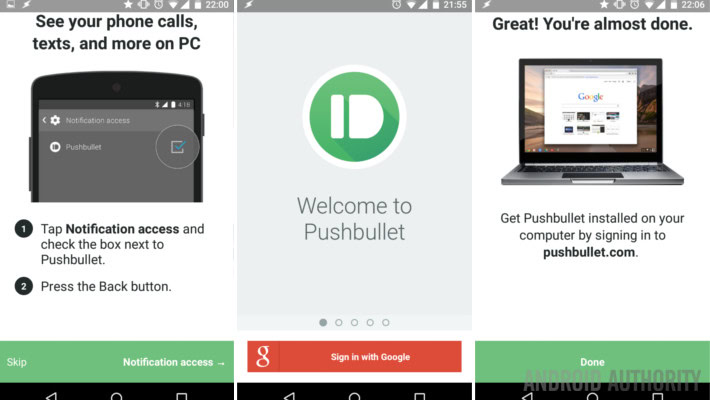
The first time you open Pushbullet, you will get a side scrolling overview of the app, plus a persistent ‘Sign in with Google’ prompt at the bottom. If you are still on board, go ahead and sign in with Google to get started.
If this is your first time through, Pushbullet will immediately prompt you to turn on Notification access. Follow the on screen steps or skip forward and see below.
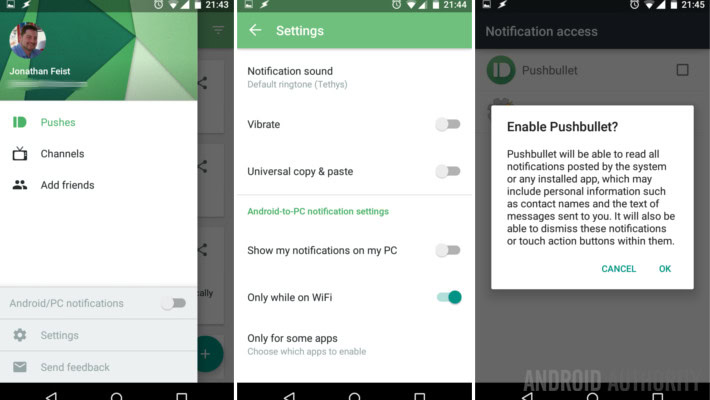
Once inside Pushbullet, swipe in from the left, or hit the triple-line menu button in the top left, to access the main menu. You will see the option to turn on Android/PC notifications right here, or hit Settings for more options.
Tap to turn on Show my notifications on my PC.
This takes you to the Notification Access settings of your device, where you will need to grant Pushbullet access to your system notifications. Simply tap the check box and confirm by hitting the OK button on the popup screen.
As mentioned, go ahead and play with the remaining settings, such as sending notifications only over WiFi or fine tuning a specific list of apps that can send notifications. Whenever you are ready, we are now going to head over to your computer.
We will work with the Pushbullet extension for the Chrome browser today.
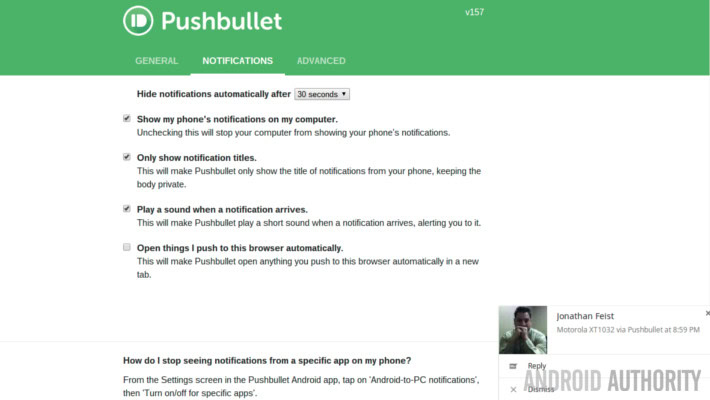
Once installed, head into the options for the Pushbullet extension.
You will find the Notifications tab, head into it.
Inside Notifications you will see a few options. Configure everything as you see fit, but be sure to turn on the first option – Show my phone’s notifications on my computer.
As far as getting things to operate, this should about do it for you. Go ahead and give it a try.
What’s next
Pushbullet is capable of so much more than simply displaying your Android device notifications on your computer. Instead of trying out just any old notification, be sure to try out an SMS message. Unless you’ve turned things off in the settings, you’ll be able to respond to that Text message right from your computer.
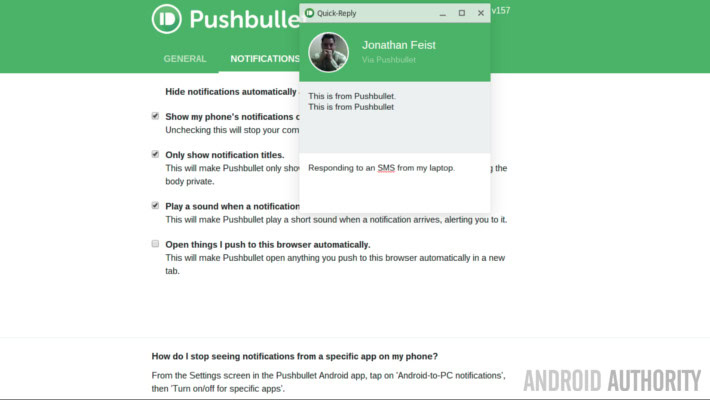
You may have also seen and heard that Pushbullet operates as a Plugin for Tasker. This allows you to find all sorts of creative ways to push information, including notifications, to all of your enabled devices. This also allows you to use Pushbullet to trigger Tasker Tasks on your Android device. If you recall a couple weeks back, we sent SMS messages to Tasker to turn on our home-grown security tool, you may find Pushbullet to be a more elegant method of doing this.
Finally, Pushbullet offers one more point of entry. Head on over to the Pushbullet website and log in with your account. You will gain access to all un-deleted pushes and be able to fire stuff to your other connected computers and Android devices.
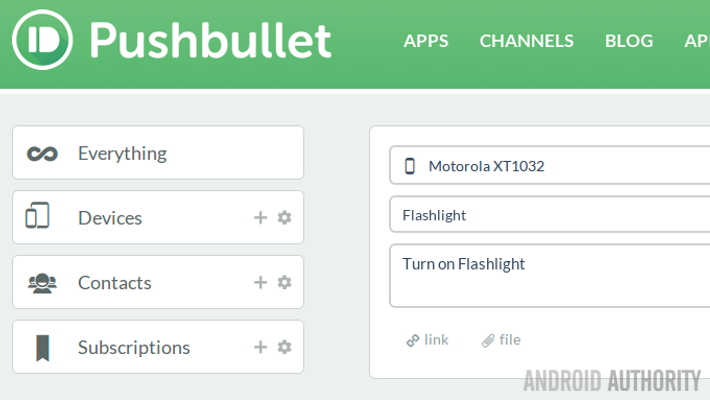
At this time, just for fun, I am using the Pushbullet website on my laptop to turn on the flashlight feature on my phone. I will leave it to you to imagine what possible reason I would have for setting up this Tasker project, but it works quite well.
Bonus
Pushbullet users can now subscribe to our new Android customization Pushbullet channel to receive an alert when we bring you a new tool, tip or trick.
(Update, we’re going to leave this link here, but we will no longer be updating the Pushbullet channel. So sorry guys.)
Next week
I hope that you are enjoying seeing your Android notifications on your computer screen, we thought that would make for a handy Android customization to add to your world. Next week, we’d like to continue looking at ways to handle SMS from your PC with a mini app-shootout.
Do you use Pushbullet, or do you prefer another method of getting Android notifications to your computer screen?